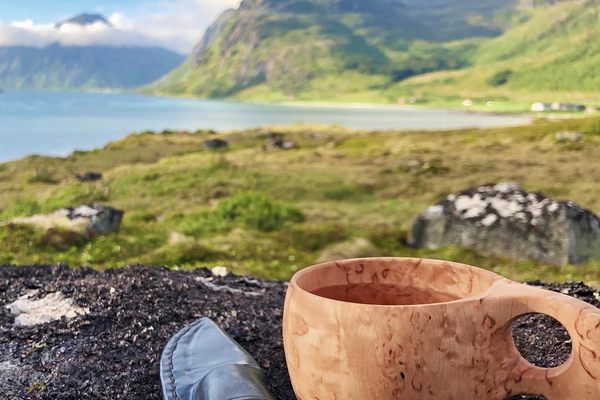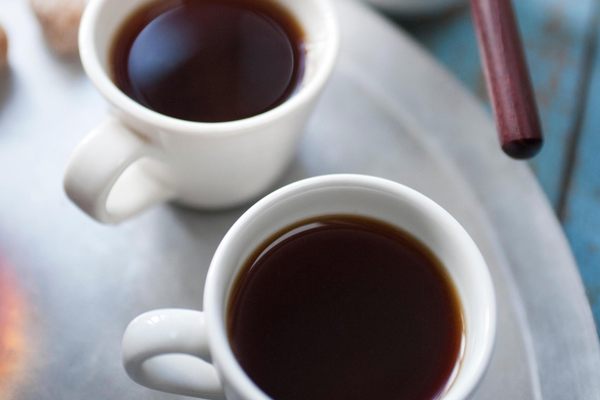Like Swedish lovers canoodling in a hot tub overlooking the frozen lakes of northern Scandinavia, kaffeost, or “coffee cheese,” bobs luxuriously in its hot coffee bath.
The dried cheese, called juustoleipä (sometimes leipäjuusto or just juusto), absorbs the steaming brew, softening without melting, like a rich, moist cheese sponge. Though it may be an unlikely pairing to some palates, among the Sami people of Lapland and other regions around northern Finland, Norway, Sweden, and Russia, sharing a mug of kaffeost is a welcome and welcoming ritual.
Juustoleipä translates to “cheese bread,” which not only refers to its dry and sturdy texture, but also its culinary use as a sort of bread-like vehicle for jam, syrup, and, of course, coffee. To make the cheese, milk—once reindeer milk, now often goat or cow milk—gets curdled, baked, and dried into thin rounds. This process not only allows for the cheese to be preserved for up to a year, but invites special preparations when it is ready to be consumed, one of which is kaffeost.
A traditional cup of kaffeost begins with a cube of cheese placed at the bottom of a wooden mug carved out of a birch burl (a bulbous tree growth). After pouring the boiling coffee inside, drinkers can spoon the softened chunks out as they sip, or enjoy the little cheesy dregs left at the bottom of the wide-mouthed mug. Regardless of how you enjoy it, don’t let it sit too long. Cold brew and curds is an unequivocally less-alluring experience.
Written By
 Leigh ChavezBush
Leigh ChavezBush














